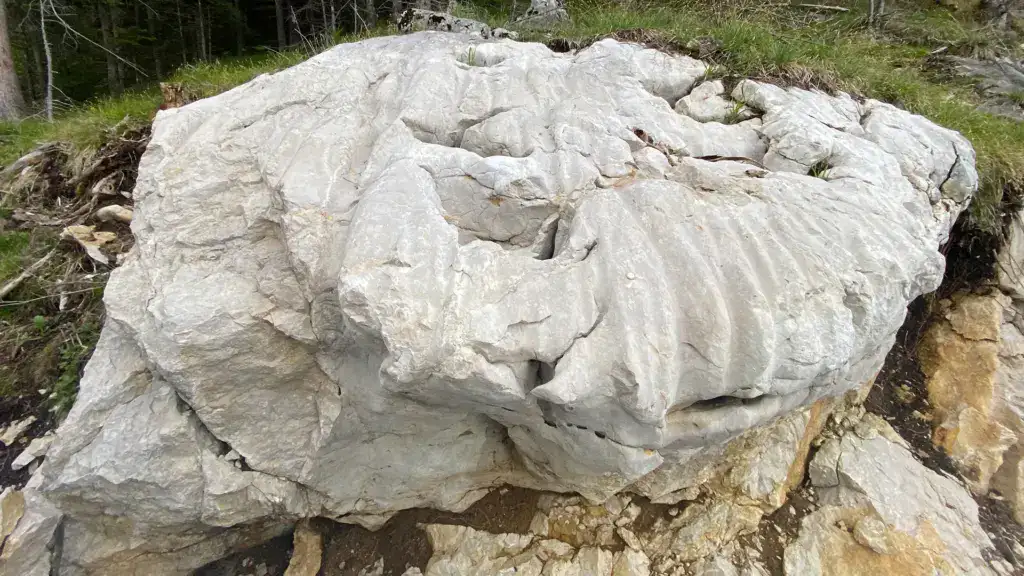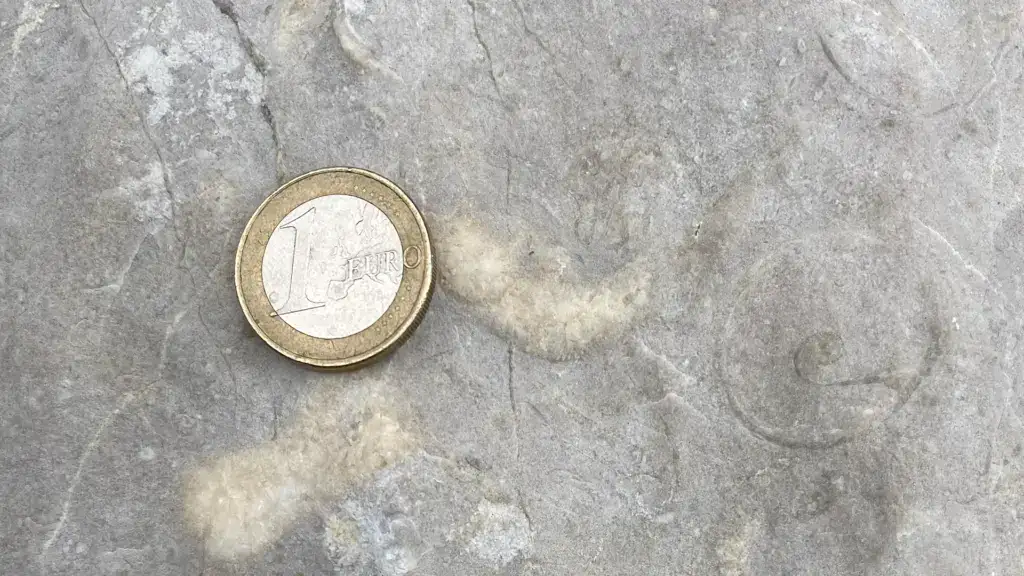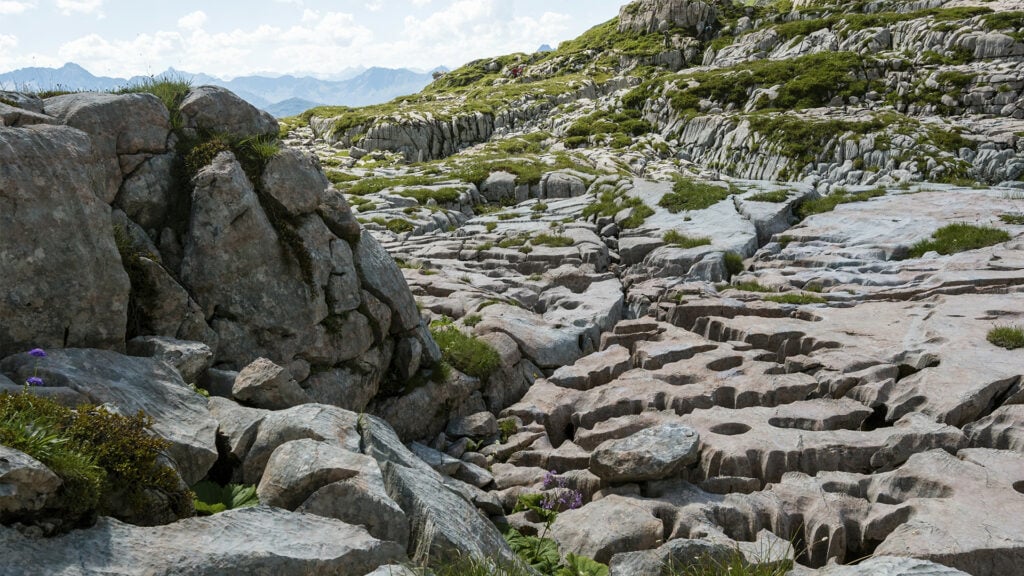You can observe the effects of karstification on the Geo.Trail. The rounded depressions on the Upper Rhaetian Limestone were once covered by soil and vegetation; organic CO₂ in the soil dissolved the rock over time.
You will also find traces of this geochemical process here on the Geo.Trail. The rounded furrows on the Upper Rhaetian Limestone at this station were formed by karstification. The rock was once covered by soil and the carbonic acid, which was formed by the CO2 of the organic material in the soil, dissolved the rock.

Exposed roundkarren on the Geo.Trail (Image source: Own illustration)
Karst landscapes and cave systems can be found in many regions of the Alps, e.g.:
- Rofan (Tirol)
- Totes Gebirge (Upper Austria)
- Grazer Bergland (Styria)
Karst landscapes do not form overnight – their development often takes thousands of years. Studies in the Austrian Alps show that in the last 10,000 years, around 10–40 cm of limestone have been eroded by karstification.
Factors influencing the speed of the process
- CO₂ content in the soil: The more organic material there is in the soil, the more CO2 is produced. This makes the water more “acidic” and karstification proceeds faster. An important factor here is root respiration. Plant roots release CO2, which reacts with water in the soil and forms a weak acid that dissolves the carbonate rock.
- Cracks and fissures in the rock: The more cracks there are in the rock, the more contact surface the water has. This allows it to decompose the rock more effectively and karstification proceeds more quickly.
Limestone and fossils
Did you notice the fossils on the roundkarren in front of you? Fossils are often found in limestone as it forms on the sea floor. You can find out exactly what fossils are and how they are formed at the next station (Fossils – witnesses of the past).

Fossils on exposed round furrows of the marine Upper Rhaetian Limestone (Image source: Own illustration)

